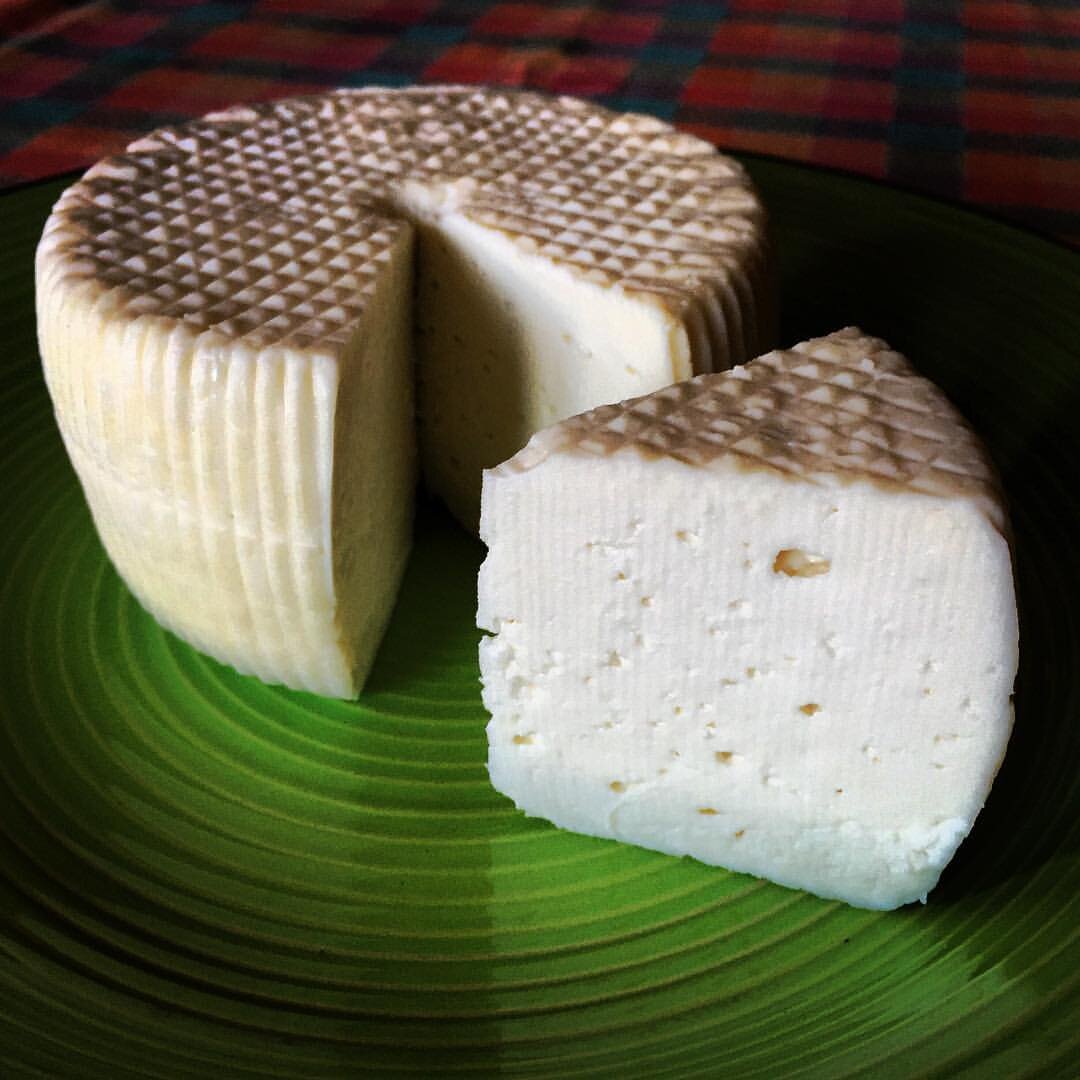The Cheeses of Campania
“Well, many’s the long night I’ve dreamed of cheese—toasted, mostly...”
Burrata
A fresh cow or buffalo milk cheese, burrata contains a solid outer shell and creamy inside. It is a rich, oozing cheese that should be consumed with scant condiments. A drizzle of olive oil and perhaps a garnish of fresh cherry tomatoes and a slice of toasted bread. Burrata is most typically from the Region of Puglia but can also be found in mozzarella producing zones of Campania. Please refrain from cooking burrata. For some reason, it is now common to find burrata on gourmet pizzas. This is a wasted extravagance, especially if the burrata has been subjected to the high temperatures of a word burning oven. Enjoy your burrata fresh, raw and local. There is no point spending a fortune on it overseas. It does not travel well and will only result in disappointment. Save the calories for a trip to the South of Italy where you can sample cheaply ‘til your heart’s content.
Caciocavallo
Excellent Caciocavallo cheeses are made from cow and sheep’s milk across the entire South of Italy. These stretched curds milk cheeses are bound together with a rope and hung across horizontal poles in order to age. The name Caciocavallo derives from the Latin term cascabellus meaning sleigh bell- for its tear drop shape. As early as 500BC, Hippocrates referenced an early Greek version of this cheese. Cheese with similar names are found across the Balkan peninsula, a testament to the ancient Greek cheese making prowess. In the Irpinia area of Campania, Caciocavallo is aged in caves and drunk with an early primitive variety of local wine.
Caciotta di Capra
Briefly aged in small baskets, Caciotta of goat’s milk from the Monti Lattari mountains are the region’s finest. Shepherds tend to herds of goats that wander the Pathway to the Gods and when the mamma goats ween their babies, these same shepherds make cheese. Goat cheeses can be consumed fresh and aged… the best are aged in local caves. The term cacio comes from the Latin word for cheese which also gave rise to the Spanish word queso and Portuguese word queijo. Caciotta simply means little cheese for the small flattened cylinders into which they are molded.
Cacioforte
A more aged version of Caciotta, Cacioforte (also Casuforte) is a goat cheese matured and packed in Statigliano, a small hamlet of Roccaromana in the Province of Caserta. Very few peasant families continue to produce this cheese due to the abandonment of goat farming in the area. The Cacioforte is placed in terracotta pots for six to twelve months producing a funky, nutty flavor. Similar cheeses were produced across Southern Italy by Greek colonizers before the rise of the Roman Empire.
Fior di Latte
One of the most famous exports of Campania, Fior di Latte is widely produced in the Monti Lattari Mountains and the Gulf of Sorrento. Given the mountainous terrain of the area, this is an exclusively cow’s milk cheese—buffalo need spacious plains. A form of mozzarella, Fior di Latte is a fresh pulled curds milk cheese. Famously, the Fior di Latte cheese is used to top the Margherita pizza.
Giuncata
A soft cheese made from a combination of cow, sheep and goat milk, Giuncato derived its name from the reed (giunco in Italian) mold used to form it. It is found across Southern Campania and Puglia. While no longer produced in the traditional reed molds, Giuncato is still made according to traditional small batch artisanal methods. In fact, it is difficult to find outide of the region and is rarely mass produced Fresh and spreadable, Giuncata is best enjoyed smeared on toasted bread and perhaps drizzled with local olive oil or honey.
Mozarella di Bufala
Buffalo Mozzarella is likely the most famous export of Campania. The wide plains of Caserta and Battipaglia produce the best versions of this cheese. The water buffalo is not native to Campania. Their most likely origin story is that Norman rulers of Sicily introduced them when they conquered Campania and formed the Kingdom of Two Sicilies. Prior to that Arabs introduced the water buffalo to Siciliy. The term mozzarella come from the verb mozzare, referring to the cutting method used to form balls of fresh stretched cheese. Buffalo mozzarella is ideally enjoyed fresh in a Capreses salad or with Prosciutto di Parma. There is no reason to order more expensive pizzas featuring buffalo mozzarella—stick with Fior di Latte on pizzas. Never ever refrigerate fresh mozzarella of any kind!
Pecorino Campano
Pecorino is a famous product of both the Campania and Lazio Regions of Italy. Made with ewe’s milk, the name pecorino just means little sheep. It is an aged, pungent cheese, the Campania version of which is typically produced in the Cilento area. It is generally aged for less time and molded into smaller cylinders than the more famous Roman version.
Provola Affumicata
A smoked cheese common in the Monti Lattari town of Agerola, Provola shares its traditional production methods with Fior di Latte. After cutting the cheese curds, cheesemakers dip in hot water to determine if the curds are ready for kneading and forming into balls. The term provola comes from thie very provare or to try—these being the first batches. Provola, at the end of the transformation into a ball, has a longer kneading phase than Fiord latte and produced a more consistent pulp. After this, it is left for a short period in a closed place in contact with the smoke that comes from humid burning hay, to acquire its smoky flavour. Neapolitan recipes including gattò (potato casserole), pasta al forno and pasta and potatoes often feature this smoked cheese.
Provolone del Monaco
The king of Campania cheeses, Provolone del Monaco is aged for a minimum of 180 days, at the end of which the product should weigh between 2.5 kg and 8 kg. To receive the DOP designation, Provolone del Monaco must contain at least 20% milk from Monti Lattari cows, generally from the town of Agerola. You can purchase two versions of the cheese- dolce (sweet), which is less aged and picante (spicy), which is more aged. This cheese is best enjoyed with a local pennata pear marmalade after your meal. Do not cook Provolone del Monaco!
Ricotta
Ricotta is a whey’s milk cheese produced with the left-over biproducts of curds milk cheeses including mozzarella and provola. The name comes from being re-cooked (ricotta in Italian) as the whey left over from forming mozzarella is recooked to form ricotta. It is a fresh cheese and can be made with sheep, goat, cow or buffalo milk.
Ricotta Salata
Ricotta Salata is the salted and aged version of fresh ricotta. Generally, this aged version is made with ewe’s milk and comes from Sicily. However, peasants from across the Campania region have been known to make versions with cow and goat milk, depending on what is available. It is a grating cheese used to finish pasta dishes, most famously Pasta al Norma- a Sicilian eggplant pasta. No Easter in Naples is complete without Ricotta Salata, which is part of the traditional Fellata Napoletana, an Easter antipasto of sliced salami, Ricotta Salata and hard boiled eggs.
Scamorza
A cow’s milk cheese similar to mozzarella, Scamorza is pear-shaped like provolone. Generally aged for three months, it is older than mozzarella and younger than provolone del Monaco. You often find smoked and is best eaten grilled.
Stracciata
Stracciata means shreds in Italian and this fresh, highly perishable cheese is formed with the left-overs from mozzarella. The best versions are found in local buffalo mozzarella cheese factories sold fresh the morning of cheese formation. Eat immediately and raw with a sprinkle of olive oil or nothing at all. Store bought versions of this cheese are disgusting.
Treccia
Though technically not a kind of cheese, Treccia is a common braided shape of mozzarella cheese that is famous across the Gulf of Sorrento. Traditionally female cheese makers braided local mozzarella into intricate shapes, studding with salamis, olives, basil and arugula. These beautiful cheeses are often enjoyed at celebratory meals, Easter and Christmas.




















